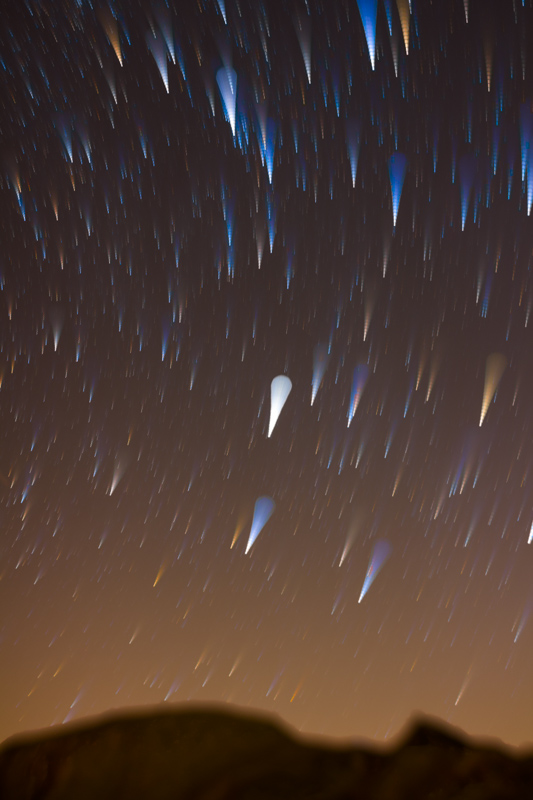alter-ego wrote: ↑Sun Mar 04, 2018 5:56 am
Case wrote: ↑Fri Mar 02, 2018 12:21 pm
I think the Pleiades are just outside the image area. I think the
three not-so-blue streaks top-right are 94 Tau, 65 Tau, and 37 Tau (4.35). The real Pleiades are 4° further out and brighter (27 Tau: 3.60). So the two very blue streaks then must be 32 Tau (5.60) and 33 Tau (6.00), halfway between 37 Tau and the brighter stars of the Pleiades.
You identified the stars correctly. I think a vestige of a Pleiades member, 23 Tau, is barely visible at the edge of the APOD image. Even with the field distortion difference between the APOD and the Stellarium overlay image, the white dots (marking the left edge of star trails) correlate well enough to real stars that the Pleiades position can be located within < few tenths of a degree. The upper right corner of the APOD image is presented here, and if you look closely, there appears to be an obscured brighter star at the edge where the arrow is pointing. I believe that star is 23 Tau.
Thanks a bunch, alter-ego!!!

The slow student that I am, I tried to make sense of your "image 2", where you had marked several stars that made some of the star trails. Since most of the bright star trails were made by stars that are bluer than the Sun, one very orange star trail stood out. Could that one have been made by HD 27639 (SAO 76571), an M0III star whose V magnitude is about 6.07?
There are a bunch of blue or bluish star trails in the upper right quadrant, north (and west, in other words right) of the Hyades. Could these trails have been made by stars like Upsilon Tau (69 Tau), Kappa 1 (65 Tau) and Kappa 2 Tau (67 Tau), HD 27309 (56 Tau), HD 27176 (51 Tau), HD 27295 (53 Tau), HD 27742 and Omega 2 Tau (50 Tau)? Maybe HD 26571 is part of the "blue star trail action" too?
All these stars are fourth, fifth och sixth magnitude, they belong to spectral classes A and B (except for one star that is spectral class F0), and they are in the correct position to make blue or bluish star trails to the upper right of the Hyades in the picture.
By the way, 23 Tau is the famous
Merope!

Ann
 Alborz Mountain Star Trails
Alborz Mountain Star Trails
